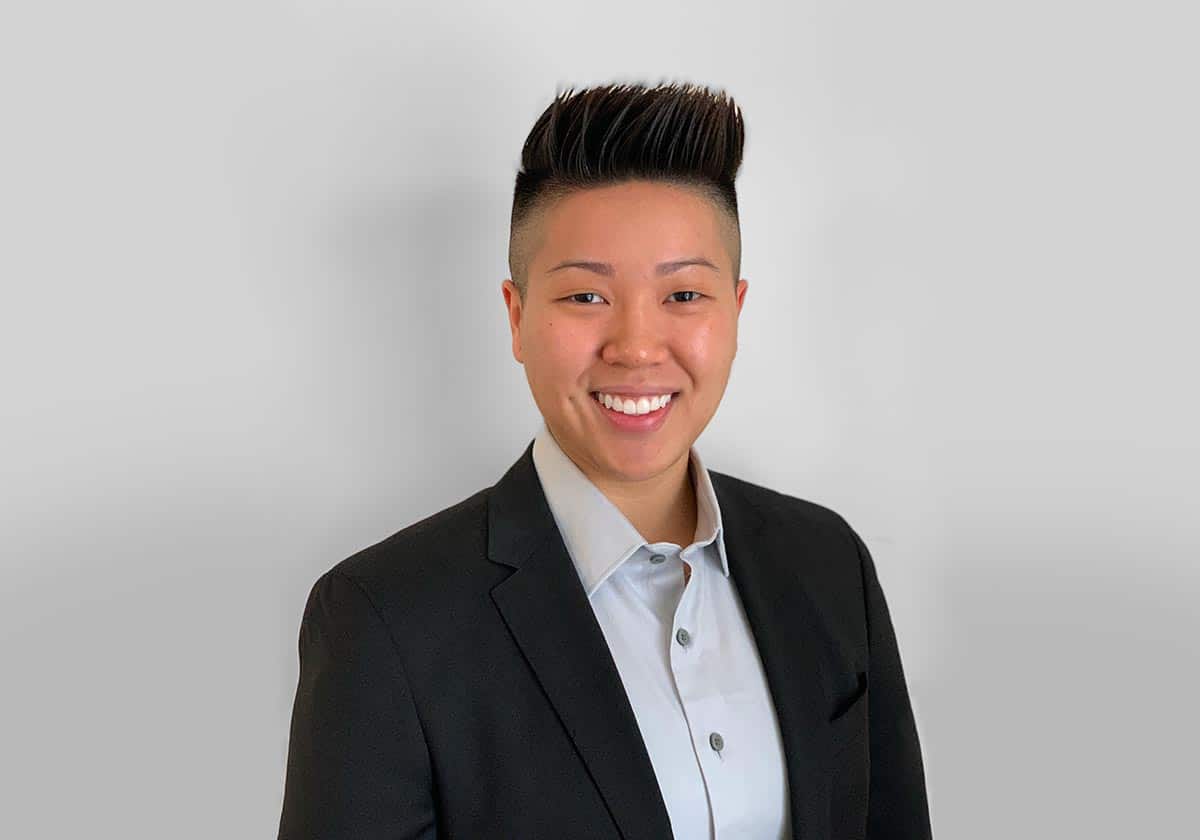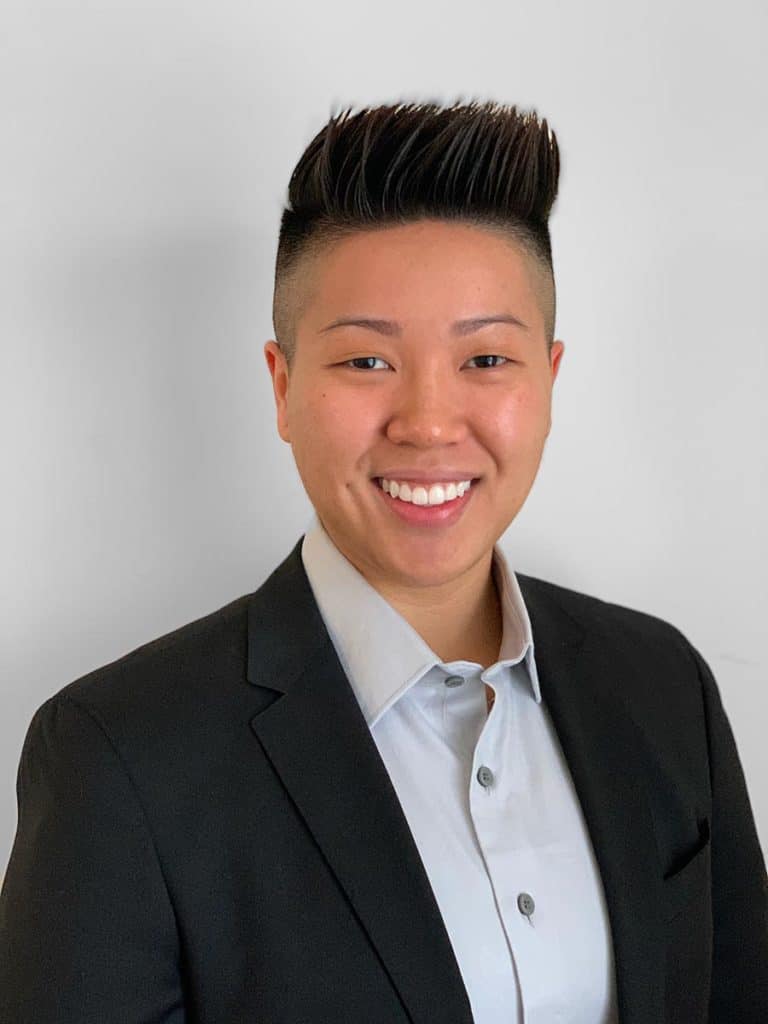
Emily Vu won a Best Student Paper Award from the American Nuclear Society
Vu is a graduate student conducting research in electron transport in stochastic media.

Vu is a graduate student conducting research in electron transport in stochastic media.

Emily Vu, a graduate student within the U-M Department of Nuclear Engineering & Radiological Sciences, has won a Best Student Paper Award from the American Nuclear Society (ANS) for her paper titled, “Amnesia Radius Versions of Conditional Point Sampling for Radiation Transport in 1D Stochastic Media.”
The award was based on the overall quality of presentations given at the International Conference on Mathematics and Computational Methods Applied to Nuclear Science and Engineering, which was held virtually earlier this month. To be eligible, the student has to be the first author of the paper that they are presenting. The students are judged based on slide legibility, technical content, the student’s ability to explain the context of their work and their understanding of their work, the student’s ability to field questions, as well as general presentation skills. This year, there were over 100 students who attended this conference internationally.
On winning, Vu said, “I honestly was really surprised. I wasn’t expecting to win the competition because of how competitive it is, but it was definitely pleasant news. I celebrated with a scoop of cookies and cream ice cream.”
“The paper is on an extension of a stochastic media transport method that I helped develop at Sandia National Laboratory (SNL) called Conditional Point Sampling (CoPS),” said Vu. “The extension was to compute quantities beyond the mean, specifically particle leakage probability density functions, and it applies to neutron transport.”
“I definitely need to thank my advisor Brian Kiedrowski for accepting me into his research group and giving me this opportunity to pursue a PhD, “ said Vu. “I appreciate his patience and encouragement throughout the past two years. Grad school is hard… I also owe a big thank you to Aaron Olson from Sandia for all of his mentorship and guidance. He has invested a lot of time and energy into my professional development and is a big reason why I developed a lot of the skills that probably got me into grad school in the first place. I also appreciate Patrick Brantley’s mentorship from Lawrence Livermore and for providing me with more professional development opportunities as a summer intern in 2020. And of course, I have to give a shout-out to all of the women in this field who have supported me and given me a sense of community.”
“I am very delighted that Emily has received this award and am incredibly fortunate to have the privilege of having her on our research team,” said NERS professor Brian Kiedrowski. “Emily has made sustained and extraordinary research accomplishments throughout her career. Her conference publications are routinely recognized for their exceptional quality by the ANS Mathematics and Computation community, which holds authors to perhaps the highest technical standards in the professional society. She truly is a strong asset to the team, the NERS community, and the nuclear field overall.”
Vu grew up in Columbia, Missouri, and has always loved math and science. With her father being a nuclear engineer, she was encouraged to pursue a STEM career from a young age. Vu and her father would spend weekends making trips to the hardware store and working on home improvement projects.
“During this time, we would talk a lot about nuclear engineering in the context of clean energy,” said Vu. “This is when my love for engineering started, and around the age of 10, I decided that I wanted to be an engineer.”
In her freshman year of high school, Vu joined the Science Olympiad team and participated in a Rube Goldberg machine-building event. She learned how to apply many physics concepts that she learned in her classes to actual problems.
“It was really cool getting to build something I conceptualized on a piece of loose-leaf paper and getting it to actually work (and win!),” Vu said. At this point, she was still considering majoring in either mechanical, electrical, or nuclear engineering.
Vu ultimately chose nuclear when applying to college, thinking she would join the power production industry. She enrolled at UC Berkeley and spent the early half of her college career interning within the industry at Westinghouse in the Nuclear Operations and Radiation Engineering Analysis group, and later as a contractor at Ameren Missouri with the Regulatory Affairs Risk Management group.
At UC Berkeley, Vu became involved with research during her sophomore year. She started in Dr. Per Peterson’s thermal-hydraulics group. “I quickly realized that thermal-hydraulics was not my calling,” Vu said,” but that same semester, I was taking a class in numerical simulations in radiation transport and loved it.” She joined the research group led by Dr. Rachel Slaybaugh, who connected Vu with Sandia National Laboratories (SNL).
Vu began an internship position with SNL the summer after her junior year and was curious about graduate school going into that summer. After her second week at Sandia, she realized that her passion was computational methods in radiation transport.
“I told my mentor, Dr. Aaron Olson, that I wanted to pursue a PhD, and he converted me to a year-round intern,” said Vu. “That same summer, I started my application to graduate school and the rest is history.”
The year-round internship at SNL lasted until almost the end of Vu’s second year of graduate school at NERS. “I believe my accomplishments now are a palimpsest of the skills I gained as a year-round intern at Sandia,” said Vu.
After Vu graduates, she plans to take many months off and spend that time with her friends and family. “This past year, I realized that since I graduated from high school, I’ve spent a lot of time trying to grow professionally and gain as much work experience as possible at the expense of family time,” said Vu. “I still have a lifetime ahead of me to develop my career, and I know having a PhD from Michigan will open many doors, but right now it is important to me to spend quality time with the people that I love.”
When she’s not studying transport methods and stochastic media, Vu enjoys weightlifting, eating good food, and basking in the sun.
Vu’s dissertation topic is on developing a statistical condensed history model that will allow for electron transport in stochastic media while accounting for the underlying randomness of stochastic material mixtures. The common denominator between this and the research she did for her paper, is that both are modeling particle transport in stochastic media, but the way neutrons and electrons are handled is very different.
Vu explains the research she is currently working on for her dissertation:
Tell us a bit about your research:
Like any other particle, the random trajectory of electrons can be modeled using a Monte Carlo approach. However, simulating electrons in this way is computationally expensive because of the number of interactions an electron experiences within a short distance.
A common and widely-used method for electron transport that addresses this long runtime is the condensed history method. This method segments electron interactions into step and substep lengths and computes the global angular deflection and energy loss of the electron within those steps and substeps. However, this method assumes a homogeneous background material and does not work well on problems with many material boundaries often found in stochastic media.
My dissertation topic is on developing a statistical condensed history model that will allow for electron transport in stochastic media while accounting for the underlying randomness of stochastic material mixtures.
What problem is your research aiming to solve?
So far, the fields of electron transport and transport in stochastic media have been studied extensively but separately. My dissertation topic is trying to narrow the gap between the research areas of electron transport and transport in stochastic media using a condensed history approach. Stochastic media (or random media) is a material mixture where the location of material properties is only known statistically. Transport methods that have been developed for stochastic media apply directly to neutral particle transport. Methods developed for electron transport apply to problems with homogenous material backgrounds and do not work on stochastic media problems. Not much work has been done in developing methods for simulating electron transport in stochastic media.
Is there a simple analogy we can use to demonstrate?
We know how to model individual particle interactions. If we wanted to model how electrons would move through a block of cheddar cheese, it would take a long time if we simulated every single interaction the electron might experience. But we could use the Condensed History method to speed up this calculation because we know how to approximate the effects of the cheddar on the electron after traveling a certain length because the material content of the cheddar does not change.
If we wanted to model how electrons would move through swiss cheese, we couldn’t use the Condensed History method because we don’t know the exact location of the holes within the swiss cheese, and the Condensed History method doesn’t adequately capture effects of the electron moving between the cheese and holes for a given length traveled. For the case of swiss cheese, we would have to revert to modeling every single electron interaction, which would take a long time.
My research is in developing a Condensed History method that adequately approximates the effects of traveling across many material types within a given length, such that we could more efficiently model how electrons move through swiss cheese.
What are the practical uses?
Having a condensed history method for stochastic media would allow for efficient and accurate electron transport calculations for a number of applications. Stochastic mixtures caused by Rayleigh-Taylor instabilities are often found in inertial confinement fusion (ICF) problems, and this method would efficiently and accurately model the energy production and deposition of electrons within an ICF target. Another example is in radiation therapy applications where organ tissue such as lung tissue often undergo diagnostics and optics. In this problem, it is important to know where electrons produced from beta decay may deposit energy within the tissue.